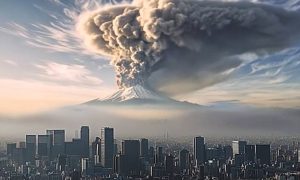Travel enthusiast and veteran dive photographer Gordon Reid takes us off the beaten tracks of Bali to some less well-known parts of the island and its surrounding seas.
Most visitors to Bali gravitate to the coastal resorts around Kuta/Seminyak, Jimbaran, or Sanur, and the inland cultural haven of Ubud. In this article, I’ll recount my exploration of some further-out, less well-known areas that are also worth a visit. My main focus is diving (and snorkelling), but some places will also appeal to land-based explorers as well as beach bummers.
I’ll start with the most obvious and – for divers at least – probably the best-known of these less-visited areas: the northeast coast. There are two main places to stay here: Tulamben and Amed. Both are really large villages rather than towns, and each got its start as a small fishing village. Here are the pros and cons of each. Photos are provided, but though all taken by the author on this trip to Bali, are intended as a collective overview of the various locations covered, rather than a specific representation of any one site.

TULAMBEN
This modest village straggled along the coast is in my view the best location in all Bali for keen scuba divers and macro (small creature) photographers like me. Why? Well to start with, it has three great dive sites literally straight off the main beach.
The most famous of these is the Liberty Wreck, a large American WWII supply ship and one of the most accessible wreck dives in the world: wade in from the beach and the wreck appears magically before you at about six metres, sloping down to 30 metres or so. After many decades in the sea, the wreck is now rather broken up. Yet it is still an impressive site, with its huge, jagged hull hosting a good range of marine life, including fans and other colourful soft corals; large sweetlips, angel fish and other reef fishes; and a range of nudibranchs and other smaller creatures. Descend to it at night (recommended), and you will have a good chance of seeing large moray eels slithering around hunting, as well as numerous crustaceans of all sizes. Also, like its two neighbouring sites (below), the Liberty is an easy dive, suitable for beginners to advanced divers.
Right next door off the middle of the beach is the Coral Garden. Here, too, you just walk in and then glide down a gentle slope, where you will find clumps of hard and soft corals. This includes a number of ‘cleaning stations,’ where anything from zebra morays to large-ish groupers congregate to be nitpicked (literally) by small cleaner wrasses alongside a mini-army of red-striped cleaner shrimp. The third walk-in site off the beach, the Dropoff, meanwhile offers a steeper and deeper descent along a wall, with the chance of sighting a shark or other bigger stuff, not to mention plentiful hard and soft corals and their inhabitants.


But that is not all! Along the coast, within a short boat ride or drive of Tulamben, you’ll discover a series of other tucked-away bays with easy-to-access dive sites. Some offer decent soft and hard corals, but for me, the highlights are those with black volcanic sand. These may not look much at first, but delve deeper (preferably with a good local guide), and you will find an absolute treasure trove of strange and wonderful creatures, many tiny: from scorpionfish, pipefish, and pygmy and full-sized seahorses, to a massive range of colourful nudibranchs, not to mention glorious crustaceans such as mantis, whip corals, and ornate harlequin shrimps. For a macro lover and photographer like me, this is Eldorado! As a further bonus, there is also a newer, intact, and exciting wreck dive a little further up the coast: the Boda Wreck.
The cons? Well, Tulamben has a few nice resorts to choose from (including the one I chose, Matahari, which I highly recommend), all at very reasonable prices. However, the village itself is not very attractive, and has only a limited range of restaurants and bars. Moreover, most of the beaches are pebbles, not soft sand. In sum, Tulamben is excellent for keen divers and okay for snorkellers, but not recommended if you are looking mainly for sandy beaches and/or lively nightlife.

AMED
Which brings us neatly to nearby Amed. Many tourists come here rather than Tulamben precisely because it has better non-diving attractions. First of all, a more scenic setting with an attractive black sand beach. Second, a rather wider and better range of cafés, restaurants, and bars. And third, some worthwhile attractions within easy reach, including both coastal viewpoints and scenic mountain temples – not to mention Bali’s majestic Mt Agong, the highest and holiest point on the island, and also an active volcano. All of these can also be visited from Tulamben, but they are that bit further and take longer to reach.

On diving, the reverse is true. Amed itself has a decent house reef, good for snorkellers off the beach, as well as its own, albeit somewhat depleted, small wreck. However, the best dive sites are further north, closer to Tulamben (as described earlier). All perfectly reachable on a day trip from Amed, but be forewarned that you’ll spend more time on the road, and less in the sea.
Conclusion? Stay in Amed if you are not a hardcore diver or snorkeller, and want a balance between these activities and beach-lounging, nightlife, and land-based sight-seeing. Or why not split your time between there and Tulamben?

One last thing to note. Both Amed and Tulamben are quite far from the Kuta area. Not in distance (around 100 km), but in time. As seasoned visitors will know, traffic in Bali moves glacially at times, if at all, so it’s four hours at least to get to Kuta. This is why I recommend staying a few nights in the northeast, rather than taking a rushed day trip across the island.
THE MID-NORTH: LOVINA AND PURI JATI
Let’s now move our gaze to the north coast of Bali. Through the centre of the island, more or less due north from Denpasar, lies the attractive coastal village of Lovina. It has a nice white sand beach, a promenade to stroll along, and a pretty good range of restaurants, bars, and cafés to enjoy, as well as resorts at different levels of comfort and prices to choose from. There are also some alluring hot spring baths a short trip away. All in all, Lovina is probably a bit like the coastline from Kuta northwards used to be 30 or more years ago, before over-development took hold. If you are looking for a more laid-back Balinese beach holiday, Lovina is definitely worth considering.
I mention diving only second here because it is rather limited and specialised. The main underwater attraction is muck diving (aka macro diving) at Puri Jati, a small, grey sand beach several miles west of Lovina. The beach itself is nothing to write home about, and the water is generally murky, with mainly sand and sea grass but little or no coral. So why come here? Well, peer through the murk and you can find some startlingly strange creatures. I saw a huge sea snail, leaf scorpionfish, and pipefish, cowfish, cuttlefish, the tiny sap-sucking sea slug known as ‘Shaun the Sheep,’ and the rare sight of a huge, ugly stonefish lumbering along the bottom. Various other strange creatures are regularly sighted here. Verdict? I wouldn’t recommend coming all the way here just to dive, but if you are near the area, it is worth a day visit.

THE NORTHWEST: MENJANGAN ISLAND AND SECRET BAY
Our last stop takes us to the far north-west of Bali – just across the strait from the eastern tip of Java. The prime attraction here is Menjangan (meaning ‘deer’) Island, for two reasons. First, it has a beautiful fringing coral reef, full of colourful sea fans, other soft corals and attendant fishes, and other reef life. This makes for good, easy diving, as well as excellent snorkelling. Oh, and Menjangan does indeed have photogenically friendly deer! You cannot stay on Menjangan Island itself, but there are a few decent resorts, some with beaches, just a short boat trip across the water. For land explorers, the West Bali National Park is also nearby (although it has decidedly mixed reviews).

Finally, a short distance west of here lies the small town of Gilimanuk, facing onto Secret Bay – another very good site for macro. There are a few simple resorts to stay in. But overall, Menjangan has the better offering for divers, and definitely for snorkellers or indeed land/beach lovers. Do enjoy your trip to the Bali less visited… I certainly did!
This article, along with its photos, contributed by Gordon Reid.



















